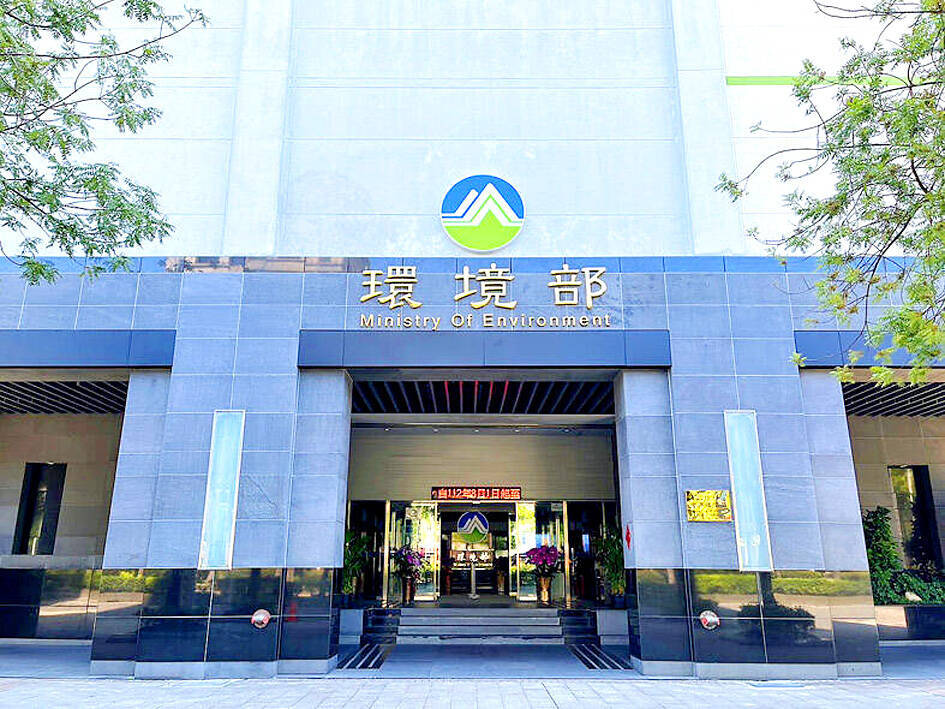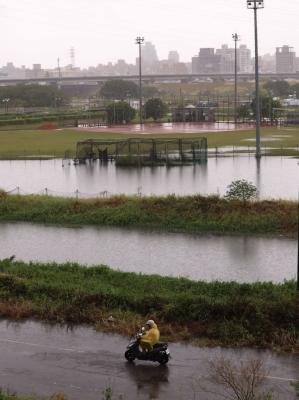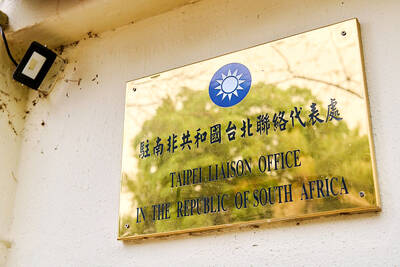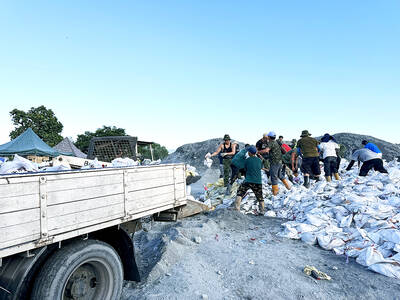Green-collar talent demand reached an eight-year high of an average of more than 21,000 people per month from January to April, with the high-tech industry accounting for the greatest demand of all industries at 22 percent, the latest Green-Collar Job Market Report said.
The Ministry of Environment yesterday published the report on green talent demand data collected for the first half of this year.
The report examined more than 468,000 hiring companies and nearly 9 million jobseekers registered in the database of the 104 Job Bank and analyzed key variables such as job titles, job content and required skills or certificates.

Photo: Chen Chia-yi, Taipei Times
About 17,000 green-collar jobs, or 77 percent, were available across the six major industries, including high-tech, manufacturing, construction and real estate, trade and distribution, healthcare and sanitation, and business support services such as legal, accounting, consulting, research and development (R&D) or design, the report said.
Of the six major industries, the high-tech industry — including electronics, information technology, software and semiconductors — made up the greatest green talent demand at 22 percent, or more than 4,600 people, likely because the industry is large in scale, tech-intensive, and subject to strict regulations and intense international competition, it said.
In terms of job vacancies, about 10,000 green-collar jobs, or 48 percent, were related to environmental health and safety (EHS), sales, R&D engineering, maintenance and technical services, project and product management, and operators and technicians, the report said.
Of these job types, the demand for EHS-specialist green talent that can assist firms with legal compliance related to net zero commitments accounted for 15 percent, or more than 3,300 vacancies, it said.
The demand for talent with a skill combination of green collar and artificial intelligence (AI) expertise rose by 398 percent to 4,301 vacancies per month on average from January to April over the past eight years, accounting for 19.8 percent of all green-collar job vacancies, up from 14.7 percent in 2018, the report said.
Minister of Environment Peng Chi-ming (彭?明) yesterday said the ministry would step up efforts to train green talent, given that current workforce is insufficient to meet the labor demand.
The integration of AI into green-collar jobs has become imperative, while knowledge-intensive industries showed a strong demand for the introduction of AI to offer net zero solutions, he said.
That reflected the ongoing trend in which more companies engaged in net zero transition by “applying” instead of “developing” AI technology, Peng said.

Taipei, New Taipei City, Keelung and Taoyuan would issue a decision at 8pm on whether to cancel work and school tomorrow due to forecasted heavy rain, Keelung Mayor Hsieh Kuo-liang (謝國樑) said today. Hsieh told reporters that absent some pressing reason, the four northern cities would announce the decision jointly at 8pm. Keelung is expected to receive between 300mm and 490mm of rain in the period from 2pm today through 2pm tomorrow, Central Weather Administration data showed. Keelung City Government regulations stipulate that school and work can be canceled if rain totals in mountainous or low-elevation areas are forecast to exceed 350mm in

EVA Airways president Sun Chia-ming (孫嘉明) and other senior executives yesterday bowed in apology over the death of a flight attendant, saying the company has begun improving its health-reporting, review and work coordination mechanisms. “We promise to handle this matter with the utmost responsibility to ensure safer and healthier working conditions for all EVA Air employees,” Sun said. The flight attendant, a woman surnamed Sun (孫), died on Friday last week of undisclosed causes shortly after returning from a work assignment in Milan, Italy, the airline said. Chinese-language media reported that the woman fell ill working on a Taipei-to-Milan flight on Sept. 22

COUNTERMEASURE: Taiwan was to implement controls for 47 tech products bound for South Africa after the latter downgraded and renamed Taipei’s ‘de facto’ offices The Ministry of Foreign Affairs is still reviewing a new agreement proposed by the South African government last month to regulate the status of reciprocal representative offices, Minister of Foreign Affairs Lin Chia-lung (林佳龍) said yesterday. Asked about the latest developments in a year-long controversy over Taiwan’s de facto representative office in South Africa, Lin during a legislative session said that the ministry was consulting with legal experts on the proposed new agreement. While the new proposal offers Taiwan greater flexibility, the ministry does not find it acceptable, Lin said without elaborating. The ministry is still open to resuming retaliatory measures against South

The Central Emergency Operations Center (CEOC) has made a three-phased compulsory evacuation plan for Hualien County’s Mataian River (馬太鞍溪) disaster zone ahead of the potential formation of a typhoon. The plan includes mandatory vertical evacuation using air-raid-style alarms if needed, CEOC chief coordinator Chi Lien-cheng (季連成) told a news conference in the county yesterday. Volunteers would be prohibited from entering the disaster area starting tomorrow, the retired general said. The first phase would be relocating vulnerable residents, including elderly people, disabled people, pregnant women and dialysis patients, in shelters and hospitals, he said. The second phase would be mandatory evacuation of residents living in